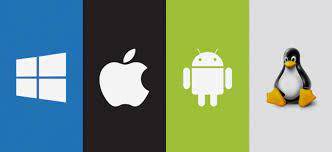What exactly is an operating system?
After being loaded into the computer by a boot software, an operating system (OS) is the programme that manages all of the other application programmes in the computer. The application programmes interact with the operating system by requesting services through a specified application programming interface (API). Furthermore, allows users to interact with the operating system directly using a user interface, such as a control interface (CLI) or graphical user interface (UI) (GUI).
Why would you use an operating system?
An operating system provides significant advantages to computer software and software development. Without an operating system, each application would have to contain its own UI as well as the extensive code required to handle all low-level computer capabilities such as disc storage, network interfaces, and so on. Given the huge assortment of underlying hardware available, this would significantly increase the size of each application and render software development unfeasible.
Instead, many basic activities, such as transmitting a network packet or displaying text on a standard output device, such as a display, can be delegated to system software, which acts as a bridge between applications and hardware.
The system software allows programmes to interface with the hardware in a consistent and repeatable manner without the applications needing to know any information about the hardware.
As long as each application accesses the same resources and services in the same manner, the system software – the operating system – can support a nearly unlimited number of apps. This significantly decreases the amount of effort and coding required to design and debug an application while also assuring that users can control, configure, and manage system hardware via a common and well-understood interface.
After installation, the operating system uses a large library of device drivers to tailor OS services to the individual hardware environment. As a result, while any program may make a common call to a storage device, the OS receives that call and utilizes the relevant driver to translate the call into actions (commands) required by the underlying hardware on that particular computer.
Today, the operating system provides a comprehensive platform for identifying, configuring, and managing a wide range of equipment, such as processors; memory devices and memory management; chipsets; storage; networking; port communication, such as Video Graphics Array (VGA), High-Definition Multimedia Interface (HDMI), and Universal Serial Bus (USB); and subsystem interfaces, such as Peripheral Component Interconnect Express (PCIE) (PCIe).
An operating system's functions
An operating system provides three essential capabilities: it provides a UI via a command line interface (CLI) or graphical user interface (GUI), it launches and manages application execution, and it identifies and exposes system hardware resources to those applications (typically via a standardized API).
UI. Every operating system necessitates a user interface (UI), which allows users and administrators to interact with the OS in order to set up, configure, and even debug the operating system and its underlying hardware. CLI and GUI are the two basic types of UI available.
Furthermore, an operating system can provide the following services to applications:
In a multitasking operating system, where numerous programmes can run at the same time, the OS selects which apps should run in what sequence and how much time each application should be given before giving another application a turn.
It manages I/O to and from associated hardware devices like hard discs, printers, and dial-up connections.
It communicates the status of operation and any errors that may have happened to each application or interactive user – or to a system operator.
It can offload batch job management, such as printing, so that the originating application is free of this effort.




Leave Comment